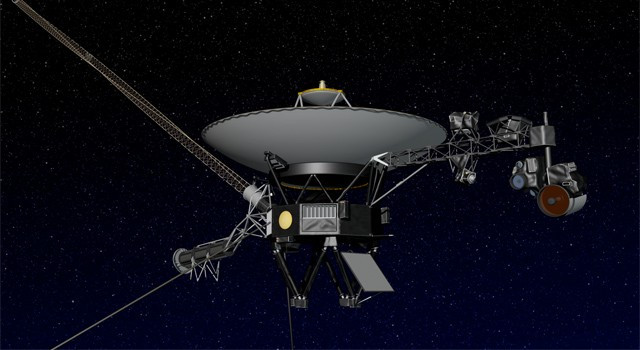NASA's Voyager 1 Enters Mysterious Region in Space

Voyager 1, the space craft launched by National Aeronautics and Space Administration (NASA) 35 years ago, may have finally left the solar system taking the touch of humanity beyond places known to mankind.
Scientists from American Geophysical Union (AGU), in an announcement made on Wednesday morning, declared that Voyager 1 had left the solar system. However, only hours later, a correction statement sent out by the scientific community said that the spacecraft may not have necessarily left the solar system, but may have just entered an unknown region in space.
It said that though there was no change in the substance of the findings that lead to the previous announcement, the sudden change in cosmic rays indicated that the spacecraft may have just entered a new region of space.
"The headline on the press release seemed to go beyond the study," Veronica MacGregor, spokeswoman for NASA's Jet Propulsion Laboratory (JPL), said.
The location of Voyager 1 could not be specifically determined because the spacecraft has been at the frontier of the solar system for a long time, but unlike natural borders on earth, a specif border of the solar system cannot be determined.
Based on the discoveries of changes in the charged particles surrounding Voyager 1, scientists from NASA and the AGU agree that it is at the threshold of interstellar space. Nevertheless, scientists from JPL are still awaiting third indicator - the direction of magnetic lines, before they announce the official departure of the spacecraft from the solar system.
"The Voyager team is aware of reports today that NASA's Voyager 1 has left the solar system," said Edward Stone, Voyager project scientist based at the California Institute of Technology, Pasadena, Calif. "It is the consensus of the Voyager science team that Voyager 1 has not yet left the solar system or reached interstellar space. In December 2012, the Voyager science team reported that Voyager 1 is within a new region called 'the magnetic highway' where energetic particles changed dramatically. A change in the direction of the magnetic field is the last critical indicator of reaching interstellar space and that change of direction has not yet been observed."
The earth will be able to receive signals and track the journey of the spacecraft for only a few more years, as with time, the various functions operating in the spacecraft will shut down one after the other due to electrical limitations. Voyager's Data Tape Recorder will shut down by 2015. By around 2016, the craft's gyroscopes will go off and by 2020, other instruments such as its magnetometer and cosmic ray detector, will shut down too. Between 2025 and 2030, the Voyager is expected to go completely dark.
However, even after the Voyager goes dark, it could keep flying for centuries and millenniums and its contents, which include music, sounds and images from Earth may be hopefully found by alien explorers (if any).
Another spacecraft, Voyager 2 was launched 16 days after Voyager 1. It follows a different path and is not believed to have reached the magnetic highway toward interstellar space yet.
© Copyright IBTimes 2025. All rights reserved.





















